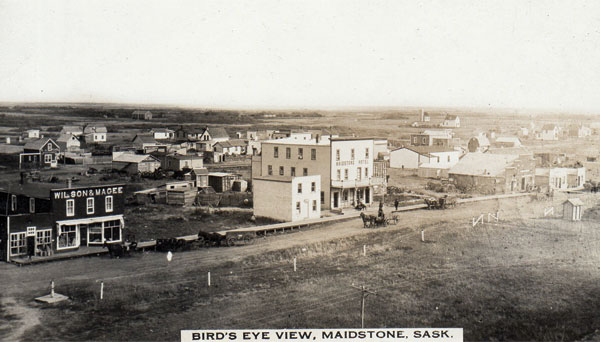
Someone, somewhere must still remember Bill Greathouse. He was an old-time, range-tempered horseman, who finally succumbed during one particularly cold November under circumstances that today, might seem odd.
Bill was still a diehard horseman in the 1930s at a time when tractors were beginning to replace horses on ranches and farms. He’d had a horse ranch near Sounding Lake, Alta., in the 1920s until “dust bowl” conditions forced him to drive his 200 horses north and east. Eventually, he drifted into the Maidstone District and became a nomadic horseman, always searching for pasture.
He was seen in the Sand Hills, along the South Saskatchewan River and in the Eagle Hills as well. He would make camp with his few belongings that he carried on a packhorse and cook his meals on an open fire. In summer he slept on the ground in a canvas bedroll cover and Hudson’s Bay Company blankets, using saddle blankets for a mattress. During the worst of winter he’d find a cabin or dugout to hole up in. He kept his saddle horse hobbled nearby and his horses grazed around him.
Greathouse was described as a big, grizzled man in his 60s and was a confirmed bachelor with an obsessive concern for his horses. Cowboys that met him said that he looked like someone out of a Charles M. Russell painting. He wore a beaver-fur fawn-coloured Stetson, a bright silk scarf, high boots and fancy silver spurs. The rest of his outfit was top quality as well. He rode a Hamley built saddle made on a Visalia tree, with a silver Crockett brand bit, a braided horsehair bridle and a woven Navajo saddle blanket. Anyone who saw Greathouse astride his horse knew he was proud of his profession.
Bill was his own boss, and since he believed that the horse was the mainstay of a ranch, he always asked pre-Depression prices for his stock. As a result, he didn’t have many sales, a situation that seemed to somehow suit him. He only seems to have sold stock when he was short on supplies and needed cash for simple staples like canned meat or coffee.
Very little else is known about him but the style of his outfit may give some clues as to his background. In those days, cowboy gear and the way of working stock was quite characteristic of particular
regions of the West. The Hamley brand of saddles goes back to 1883 in South Dakota where it was known as Hamley and Co. By 1905, they had moved to Pendleton, Oregon where they are located today. The Visalia saddle tree company goes back to 1870 when they were located first in Sacramento, California, then San Francisco and finally, since 1982, in Fresno. The saddle style with such a tree and Hamley design would have been common in Oregon or California in the late 1800s and perhaps that is where he came from and where he learned his horsemanship skills. If he had come from Alberta originally it is more likely he would have had maybe a Riley & McCormick supplied saddle — they have been in business since 1901— or even from Miles City Saddlery, a company that dates back to the 1800s and was popular with northwest cowboys.
His Crockett bit also suggests a southwest origin. Oscar Crockett was born into a cowboying family in Pecos, Texas, in 1887 and by 1914 he was making bits and spurs. The Crockett Bit & Spur Company eventually employed 125 workers and still exists today.
By the 1860s, Navajo weavers were making saddle blankets from the wool of churro sheep introduced by Spanish settlers in the 17th century. These durable tightly woven blankets were expensive but the preferred choice by many horsemen, but not easily obtained in the Canadian West.
Wherever Bill Greathouse came from and whoever he was, he carried on his nomadic life until one November day he was found dead in his bedroll with his herd grazing around him. When the authorities buried him they paid for the expenses with a sum of money he kept wrapped in an elastic band with a note that read: “Kase I kick the bucket fix thngs up”. Bill probably did not have much schooling by his writing and spelling.
Why he chose such a nomadic life we will never know for sure but perhaps he felt as did rancher Bob Budd when he said, “I seem to listen to the land when I am horseback. It may be the sense of terrain conveyed from muscle and sinew, as the horse moves through open country. Certainly much of my sensitivity is tied to the constant signals of a horse’s ears and its greater sense of what is out there, behind the trees, in the rocks, beneath the land… the complete vulnerability you feel when life is held in the hands of nature… for whatever reason most horses allow us to feel those things we could not otherwise understand.”
Information as to what happened to his outfit when he died on that cold November day and what became of his horses or where he was finally buried have not surfaced yet but the best of his horses likely were sold to cover any debts. But somewhere out there somebody might remember him or know where he was finally laid to rest or might even have a picture and can add something more to the history of Bill Greathouse, one of the last of the nomadic horsemen of the Canadian West.
